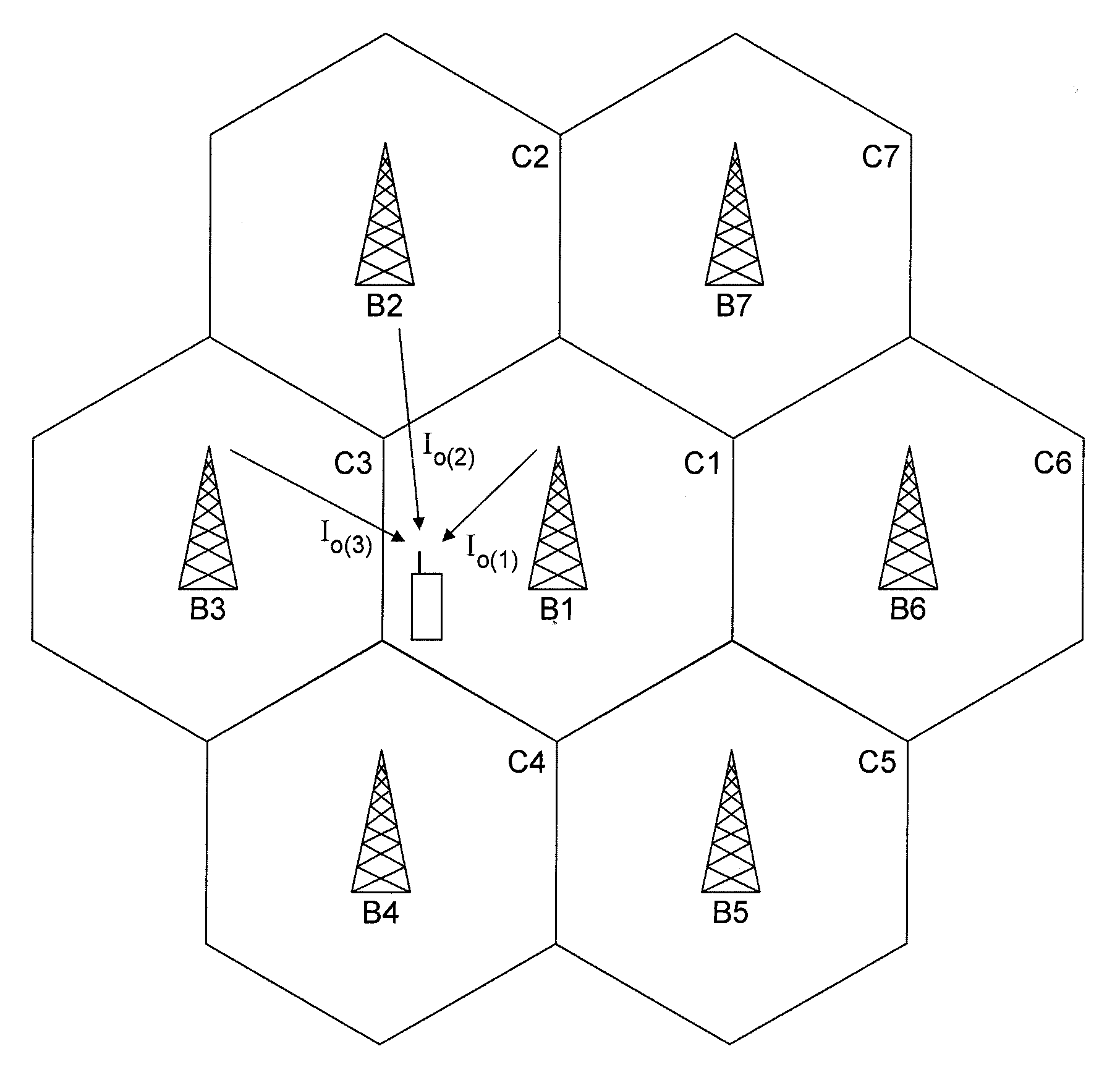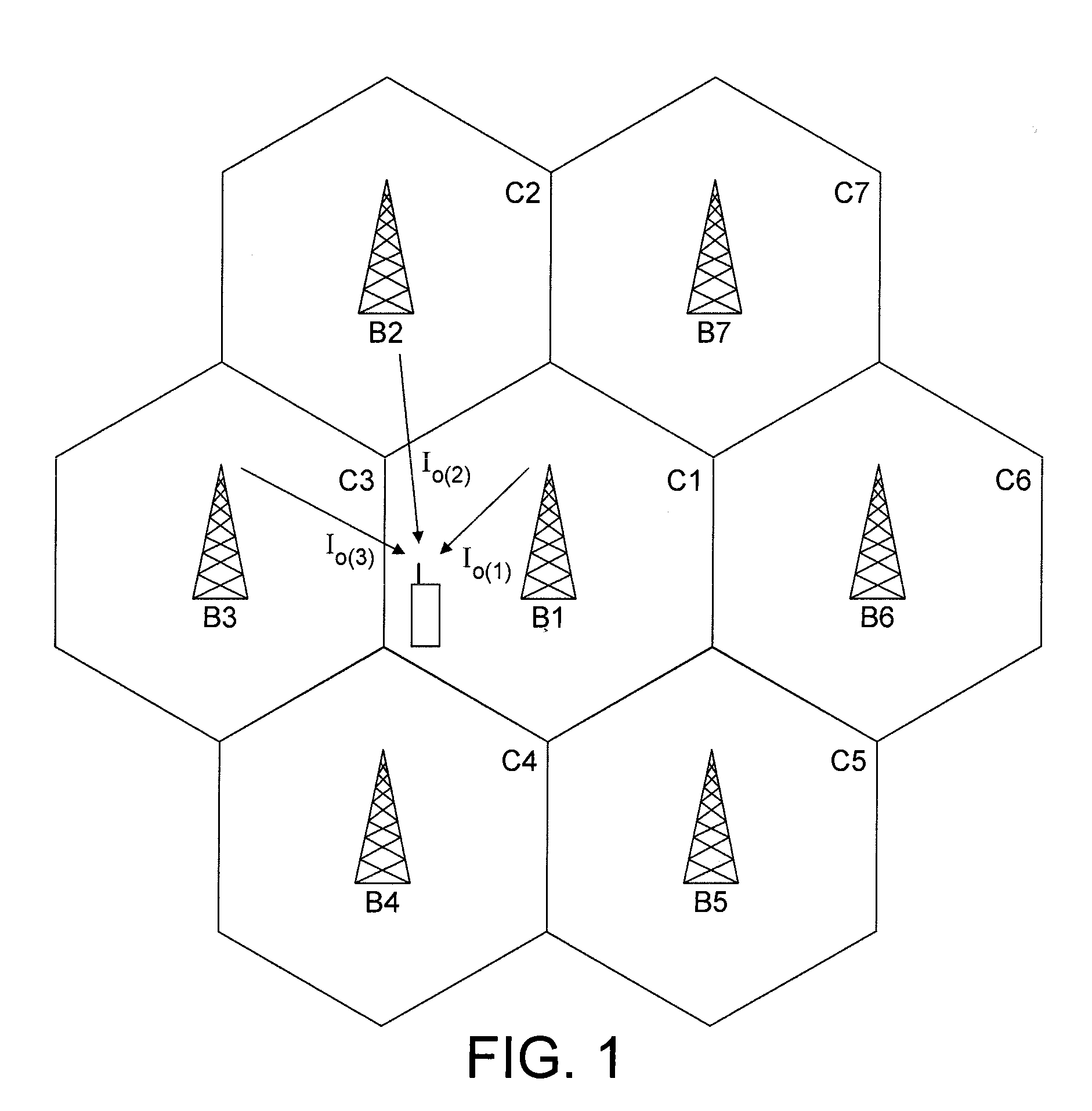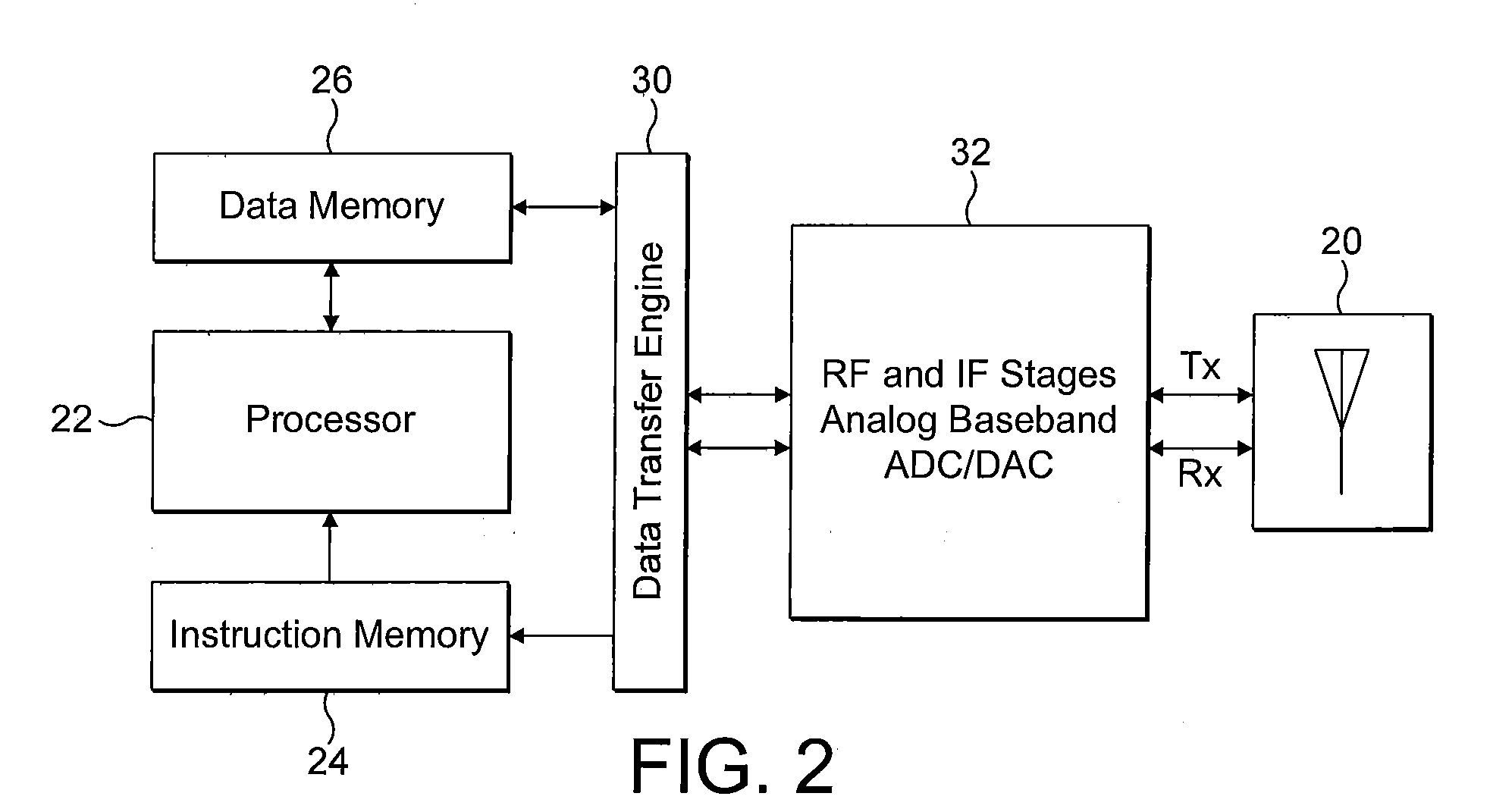Synchronous CDMA communication system
a communication system and cdma technology, applied in the field of cellular communication systems, can solve the problems of code orthogonality loss, performance degradation of conventional cdma receivers based on rake, etc., and achieve the effect of reducing estimation errors and increasing mobile speed
- Summary
- Abstract
- Description
- Claims
- Application Information
AI Technical Summary
Problems solved by technology
Method used
Image
Examples
Embodiment Construction
[0033]Those skilled in the art to which this application relates will appreciate that other and further additions, deletions, substitutions and modifications may be made to the described embodiments.
[0034]FIG. 1 is a schematic diagram of a wireless cellular network. A plurality of adjacent cells are illustrated, shown as being hexagonal but it will be readily appreciated that they could be of any shape. A base station B1 is shown serving cell C1 and potentially interfering with cells C2, C3, . . . , C7, served by base stations B2, B3, . . . , B7, respectively. It will readily be appreciated that there can be a large plurality of base stations and cells, and that base stations can serve any number of cells (including one).
[0035]A mobile terminal user equipment UE is shown in cell C1. As is well known, the UE has a transmitter and a receiver for wireless signals. The main signal which the UE is intending to receive is labeled Io(1) to represent the downlink channels from the base stat...
PUM
 Login to View More
Login to View More Abstract
Description
Claims
Application Information
 Login to View More
Login to View More - R&D
- Intellectual Property
- Life Sciences
- Materials
- Tech Scout
- Unparalleled Data Quality
- Higher Quality Content
- 60% Fewer Hallucinations
Browse by: Latest US Patents, China's latest patents, Technical Efficacy Thesaurus, Application Domain, Technology Topic, Popular Technical Reports.
© 2025 PatSnap. All rights reserved.Legal|Privacy policy|Modern Slavery Act Transparency Statement|Sitemap|About US| Contact US: help@patsnap.com



